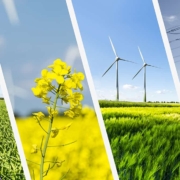Is the ESB role redundant?
Before the establishment of the Energy Security Board (ESB), the governance arrangements for the National Energy Market (NEM) were best-practice. The Australian Energy Market Operator (AEMO), the Australian Energy Market Commission (AEMC) and the Australian Energy Regulator (AER) each had separate functions providing confidence for investors and consumers in the roles and responsibilities of each body.
However, concerns were raised in the 2017 Finkel Review about reform delays due to the institutional discord between the AEMO and AEMC. To address this, the Energy Security Board (ESB) was established in August 2017, comprising the heads of each of the three market bodies and an independent chair and deputy chair to deliver on four key outcomes of the Finkel Review: increased security, future reliability, rewarding consumers and lower emissions.
Of the four key outcomes sought under the Finkel Review the ESB has been the least successful. Five years on from its establishment in 2017, the ESB has yet to deliver outcomes that reward customers or lower emissions. Approaches to increase security and reliability have only partially been delivered, through the Retailer Reliability Obligation (RRO) and an enhanced reliability standard.
At the behest of the former federal government, the ESB did successfully deliver a roadmap for major reform of the NEM, through the Post-2025 Market Design Project. However, the four areas of focus for the project are still to be delivered. These were, integration of distributed Energy Resources (DER) and flexible demand, mechanisms to manage resource adequacy (capacity) and aging thermal retirement and transmission access, and essential system services – now being progressed by the AEMC through a range of rule change proposals.
Over the last five years, the states have rapidly filled the policy vacuum setting net zero targets and policies to support the development of critical transmission infrastructure and the uptake of renewable energy, as the fleet of coal-fired generators retire.
In parallel with the ESB’s body of work, AEMO has been progressing the Integrated System Plan (ISP) and updating its renewables integration study, whilst the AEMC continued in its role in considering rule changes put forward by market proponents.
Both the AEMC and AEMO have well-established new leaders and both have signalled the importance of collaboration between the two organisations. This provides stakeholders with greater confidence in returning to the original governance structure where the AEMC and AEMO have defined roles no longer requiring the oversights and coordination of the ESB.
The ESB’s major work, the Post 2025 Market Design project, is complete and delivery of the reforms, where necessary, will be best progressed through Energy Ministers and Senior Officials.
We are calling on energy ministers to consider an alternative recommendation to the ESB:
- An orderly wind up of the ESB as soon as possible, with any projects still deemed credible to be transferred to Senior Officials.
- A revised Statement of Role for AEMO and the AEMC addressing the roles in the provision of policy and market development advice.
- Institute a Market Bodies Forum (MBF) that gives energy ministers a singular forum to engage with Industry and Stakeholders on policy and reforms needed with independent body and Senior Officials as secretariat.
Download the full discussion paper here: ESB Role discussion paper refresh








